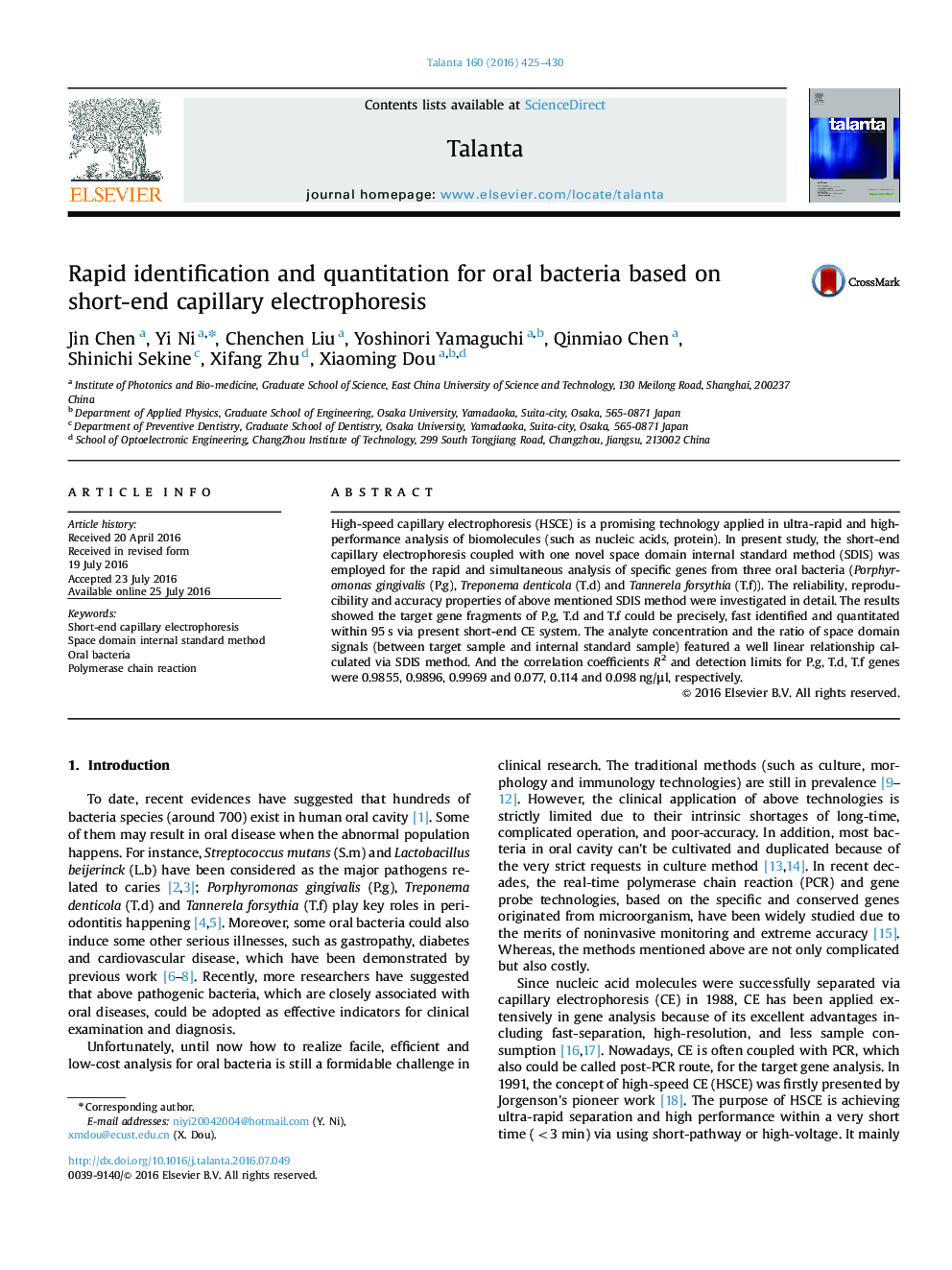| Article ID | Journal | Published Year | Pages | File Type |
|---|---|---|---|---|
| 1243277 | Talanta | 2016 | 6 Pages |
•The genes of oral bacteria P.g, T.d, T.f were rapidly analyzed by short-end CE.•One space domain internal standard method was proposed for quantitation analysis.•The quantitative route had good reliability, reproducibility, accuracy properties.•The target genes were identified and quantitated simultaneously within 95 s.•The detection limits were 0.077, 0.114, 0.098 ng/μl for P.g, T.d, T.f, respectively.
High-speed capillary electrophoresis (HSCE) is a promising technology applied in ultra-rapid and high-performance analysis of biomolecules (such as nucleic acids, protein). In present study, the short-end capillary electrophoresis coupled with one novel space domain internal standard method (SDIS) was employed for the rapid and simultaneous analysis of specific genes from three oral bacteria (Porphyromonas gingivalis (P.g), Treponema denticola (T.d) and Tannerela forsythia (T.f)). The reliability, reproducibility and accuracy properties of above mentioned SDIS method were investigated in detail. The results showed the target gene fragments of P.g, T.d and T.f could be precisely, fast identified and quantitated within 95 s via present short-end CE system. The analyte concentration and the ratio of space domain signals (between target sample and internal standard sample) featured a well linear relationship calculated via SDIS method. And the correlation coefficients R2 and detection limits for P.g, T.d, T.f genes were 0.9855, 0.9896, 0.9969 and 0.077, 0.114 and 0.098 ng/μl, respectively.
Graphical abstractFigure optionsDownload full-size imageDownload as PowerPoint slide
